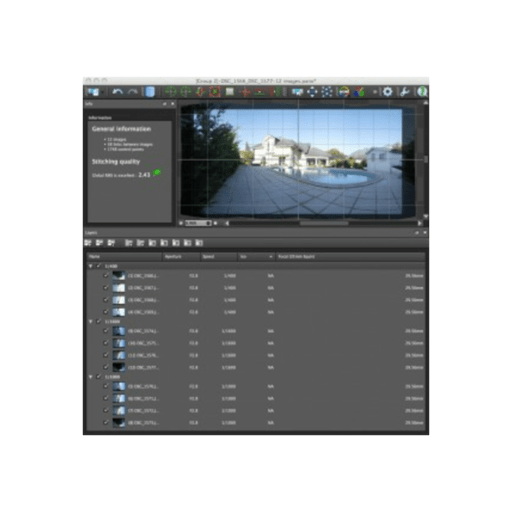

The best known application of stitching is the creation of panoramic photographs, those wide images comparable to the output of 6×12 or 6×17 cameras, that lend themselves particularly well to many landscape vistas.


Somehow stitching helps get rid of the illusion that photography captures reality. I don’t see it as a major issue for those looking at creating art. That may indeed be a problem for those in quest of capturing reality. Some thinkers dispute the photographic nature of stitched images because they don’t capture a single moment in history, but merge several time samples. Would that be any bigger a departure from an ideal capture of reality than our other images with their poor corner sharpness, light fall off, visible chromatic aberrations,…? I happen not to think it would, but stitching defects can sometimes be uglier and don’t quite match our genetic feel for what a photograph must look like. There may be cases when it is difficult to come up with a perfect image devoid of any stitching defects. When not done properly or ingurgitated in prescribed amounts, stitching does carry an element of risk. On the downside, stitching does take a bit more time and doesn’t apply to all types of images. Stitching enables the photographer to produce images in any possible aspect ratio while increasing significantly resolution and reducing the impact of lenses aberrations such as light fall off and reduced corner sharpness.

AUTOPANO PRO CAMERA TYPES SKIN
You may want to pause here for a few seconds, check for allergic skin reactions to the idea of having to spend even more time processing images…
AUTOPANO PRO CAMERA TYPES SOFTWARE
The "Pro" version of the software costs around $122, and the more advanced Giga version of the software runs at around $246.It has been known for centuries that digitally assembling a mosaic of adequately captured images is possible thanks to the process called stitching. After all the automatic work is done, the user can use the software to check all the smallest details of the panoramic image and make adjustments where necessary using an enhanced suite of editing tools. An advanced color correcting engine prevents the "vignetting" effect that plagues less advanced panoramic shots. According to Kolor, it's been mathematically proven as the most superior technology in the world when it comes to identifying similarities between images. The secret behind the technology is SIFT image stitching technology, which was developed during a research project at the University of British Columbia in Vancouver, Canada. The file can then be exported for use in other applications. The images are then uploaded into the software, which "stitches" the images together to create a stunning panorama. Unlike 360 cameras and lens-laden, throw-able balls, Autopano works with overlapping shots taken by a single-angle, standard camera. Autopano, which is considered by its developer, Kolor, to be the "best image stitching technology in the world," certainly has enough features and quality to live up to that claim. Overall Opinion: As the fields of photography and videography have advanced technologically, so too have people's desires to create stunning panoramas.


 0 kommentar(er)
0 kommentar(er)
